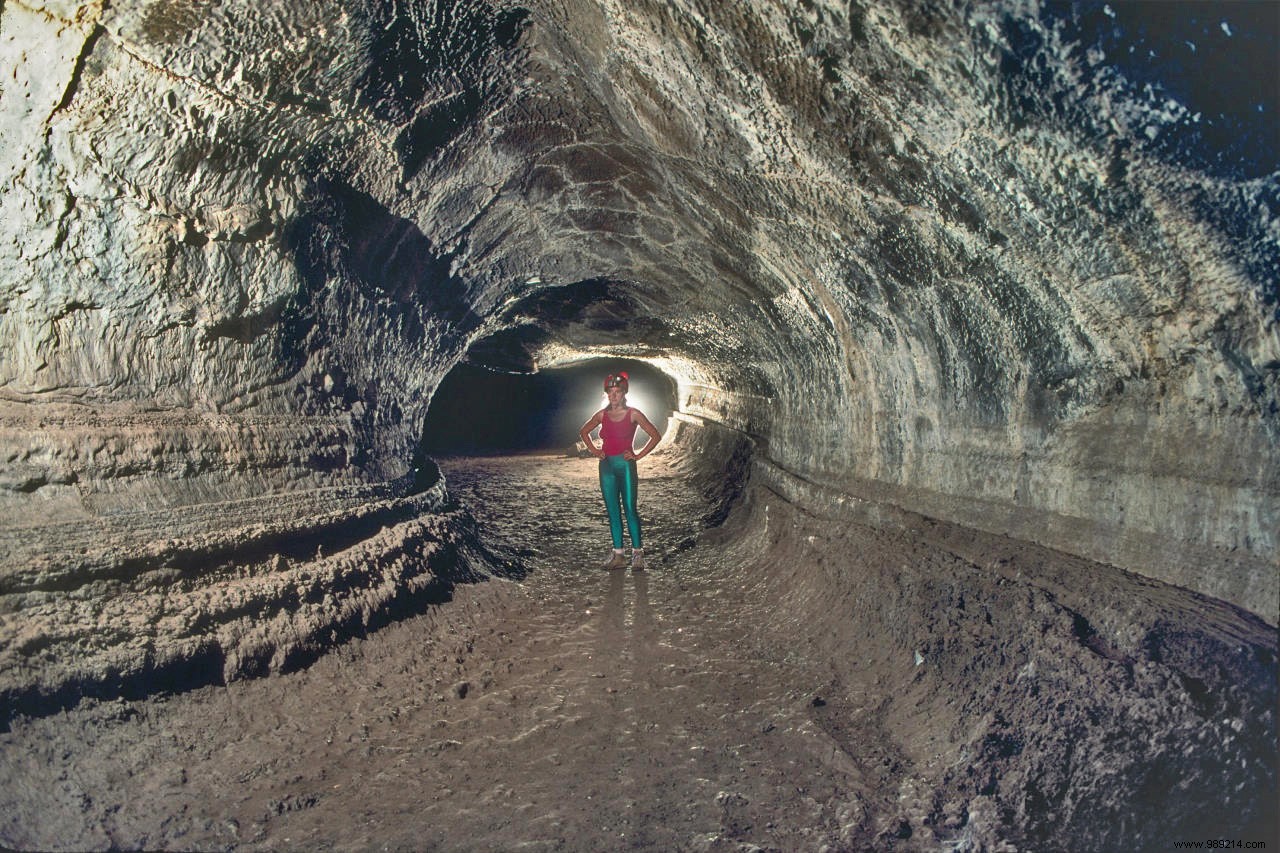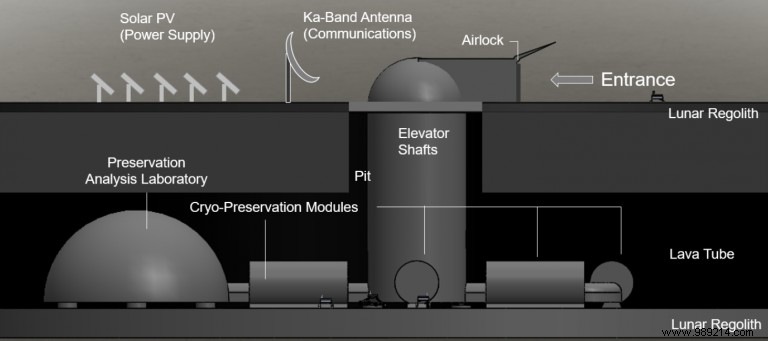A team of researchers proposes the construction of a "Noah's Ark" on the Moon to save millions of species of plants and animals. If the project seems technically very complicated, it is nonetheless fascinating.
Almost everyone has heard of the Svalbard Global Seed Vault. Built to withstand the hard blows of wars, famines and diseases, this ark is now home to more than a million species of seeds. Other "arks" have also been built for the preservation of the animal world (sperm, egg or tissue samples).
However, these structures may not be as strong as we would like. In 2016, for example, the increase in temperatures in the Arctic had indeed caused a melting of the permafrost, causing a water leak at the entrance to the tunnel.
If only the entrance hall was hit at the time and no seeds were damaged, this was an early warning. And based on climate projections, we know that incidents of this type, potentially much more serious, could happen again in the future. Whether these safes can hold up remains to be seen.
Still, sadly, few (if any) places on Earth are actually completely safe . In fact, a team from the University of Arizona recently set their sights on the Moon.
So could our satellite be our "insurance policy" guaranteeing the preservation of all terrestrial life forms? The idea might come as a surprise, but in some ways the Moon would be a perfect place for this type of installation . It is indeed very cold there, the environment is tectonically stable, there is never any melt water and according to the latest news, there are no humans around.
In their study, the researchers are inspired by the famous biblical story of Noah's Ark. However, instead of two representatives of each species, this lunar ark would aim to store seeds, spores, sperm and cryogenically frozen eggs of 6.7 million terrestrial animal, plant and fungal species.
According to the authors, this ark could be built inside lava tubes recently discovered under the surface of the Moon . These structures formed billions of years ago, when streams of lava melted through soft rock, forming underground caverns. These tunnels could then provide shelter from solar radiation, micrometeorites and surface temperature changes.

The team model features an array of above-ground solar panels that would provide electricity. Several elevator shafts would then lead to the facility where the Petri dishes would be housed in a series of cryogenic storage modules. Here, seeds should be stored at -180°C and stem cells at -196°C .
One of the great challenges to overcome with this type of cryogenic approach is maintaining the physical integrity of metal structures. However, there is a way to take advantage of extreme temperatures using an otherworldly phenomenon called quantum levitation.
“In this process, cryocooled superconducting material floats above a powerful magnet. The two pieces are locked together at a fixed distance, so wherever the magnet goes, the superconductor follows” , explains Jekan Thanga, lead author of the study. "It's as if they were held together by ropes, but by invisible ropes" .
The idea would therefore be to use this phenomenon to make the sample shelves float above metal surfaces, thus allowing robots to navigate the installation above magnetic tracks.

Another very big hurdle will be delivering all these materials on site. A project of such magnitude is indeed very heavy, but would not be insurmountable according to the team. Researchers estimate that it would take approximately 250 launches to transport fifty samples of each of the approximately 6.7 million species on Earth.
Finally, it's also unclear how these samples might be affected by the lack of gravity . In other words, the project seems interesting, but it also questions a lot. For now, this is just an idea on paper. It remains to be seen whether we have the technical and financial means to develop it. One thing is certain, it won't be for now!